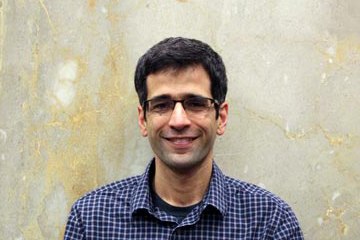A recent study published in the Journal of the Association of Environmental and Resource Economists (JAERE) tackles a policy conundrum. Sometimes local development, especially infrastructure, seems to hasten forest depletion, but in other cases it improves forest conditions. Under what program conditions, and in what contexts, can infrastructure improve both forests and livelihoods?
According to the study in JAERE, the type of infrastructure that benefits both forests and people is small-scale infrastructure that improves the returns of non-forest production.
"Our study identifies the relationship between investments in village infrastructure and the ensuing socioeconomic and forest changes," explains Christian Baehr, one of the study's authors.
Evidence from the study suggests that rural irrigation projects in Cambodia actually improved the health of nearby forests, and that roads in rural areas did not necessarily lead to forest loss.
Baehr continues, "This study finds that rural infrastructure improvements did not cause additional deforestation. In fact, in some areas, repeated investments in irrigation improvements actually reduced the trajectory of deforestation."
These encouraging findings, however, come with two important caveats.
First, irrigation improvements were only related to improved forest health when these projects were implemented on land that was already cleared or “non-forested". This study is no way suggesting that cutting down a forest, converting it to agricultural use, and then building irrigation in those fields would improve the health of said forest.
"Investments in village irrigation likely improved food security," notes Dr. Ariel BenYishay, another author on the study. "These improvements to human welfare may have actually reduced pressure on forests."
Second caveat: roads in the most densely forested regions of the country were associated with greater forest loss; only the roads through other areas, including through less densely covered forests, did not lead to greater forest loss. The study discusses this important nuance: the village roads in less-forested areas might be connected to increases in non-forest economic activity.
"Investments in village roads likely improved access to markets, health care and other services," BenYishay continues. "These types of infrastructure improvements did not necessarily cause households to convert forested land to other uses, even as nearby forests became better off."
The study examined a long-term, large-scale local infrastructure program in Cambodia. In 1996, the Royal Government of Cambodia, Swedish International Development Cooperation Agency (SIDA), the World Bank, and other donors established a $750 million-dollar program to rebuild confidence in government, starting in four local districts, called "communes" and "sangkats". In 2002, this Commune / Sangkat Fund was scaled to over 1,600 districts across the nation. By 2010, the Cambodian Government had assumed full responsibility and allocated 3% of the central government's annual budget to it. Ultimately, local councils in over 14,000 villages managed more than 40,000 infrastructure projects such as roads, water supply systems, irrigation dams, and canals.
The scale of the Commune Sangkat Fund and its contributions to improvements in human welfare are noteworthy on their own. "The bottom line is that there was no evidence of human-environment trade-off with these particular infrastructure improvements," Baehr adds. "but let's take a step back and consider the human welfare angle. In this study, we confirmed that these infrastructure projects are statistically associated with greater economic activity and lower infant mortality."
"Governance is such an important issue when it comes to environmental sustainability," adds BenYishay. "The findings from this study surprised us a little, because Cambodia -- like many countries recovering from war or instability -- had extremely weak governance when the program started, offering little protection to forests across the country. In these types of contexts, local development could have inadvertently worsened deforestation."
Because different types of infrastructure projects were rolled out in different villages at different times over two decades across the entire country, researchers were able to compare changes in conditions on the ground when a local council implemented a given type of infrastructure project versus locations that were otherwise similar.
"To do this," Baehr explains, "we examined high resolution satellite data alongside village-level data on program locations. The satellite data helped us measure aspects of forest health, such as tree cover. The program data helped us classify different types of infrastructure such as irrigation, roads, or something else. Having satellite and program data also helped us to analyze whether these projects were built in highly or sparsely populated areas."
This study leveraged many sources of data, and it utilized this data in novel ways. One of the measures that the researchers analyzed is the change in level of "greenness" in nearby forests, as measured by satellites. They analyzed nighttime light imagery as a proxy for levels of economic activity, and reductions in infant mortality as a proxy for improvements to human welfare.
"The use of both satellite data and geospatially referenced program data is one major advantage of a geospatial impact evaluation, enabling us to perform the kinds of rigorous analyses that normally require treatment and control groups in randomized control trials," adds BenYishay.
"We have now done quite a few of these geospatial impact evaluations, and we always follow where the data leads" concludes BenYishay. "Sometimes, such as when we analyzed whether land titling programs impacted Amazon forest loss, we find out that a good idea didn't work as planned. Importantly, this study on the infrastructure financed by Cambodia’s Commune Sangkat Fund, provides some clues to a different, more encouraging story: communities were able to improve their well being through small scale infrastructure improvements without losing their forests."





